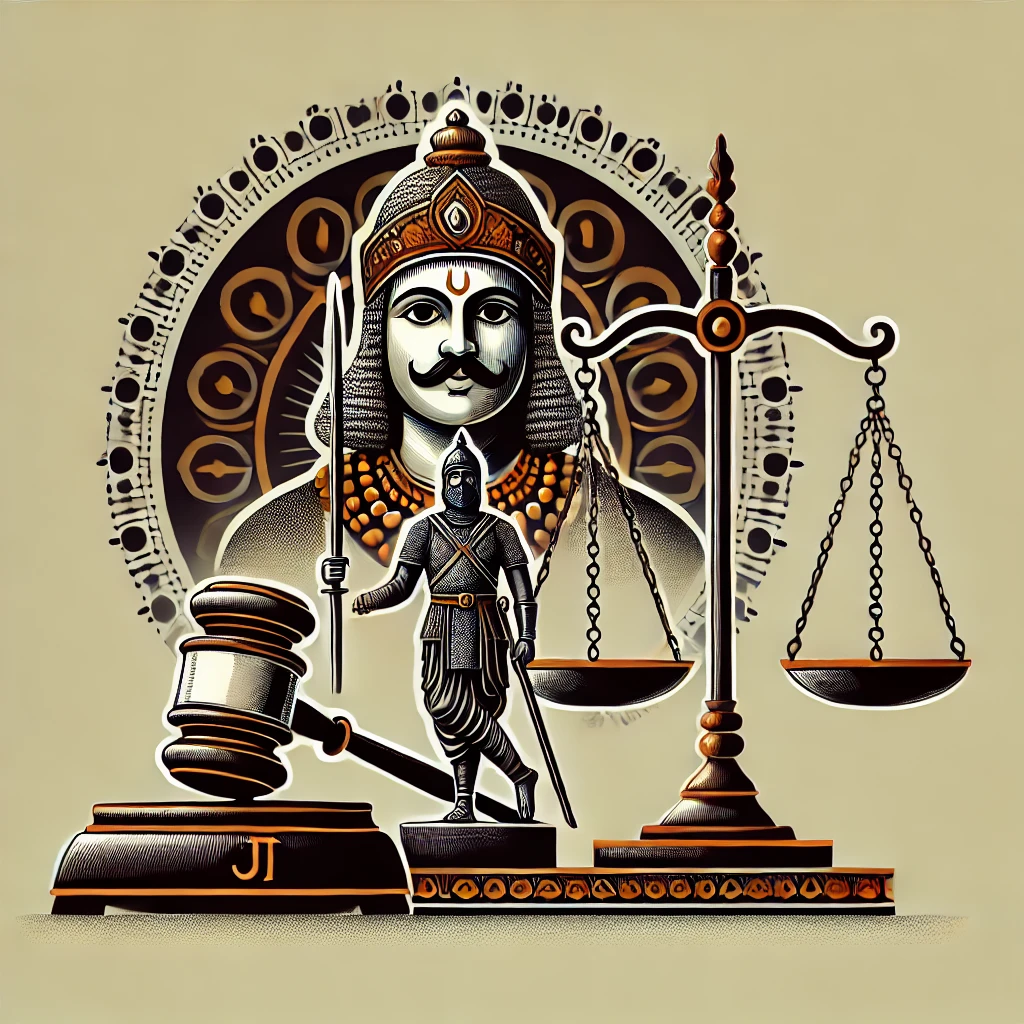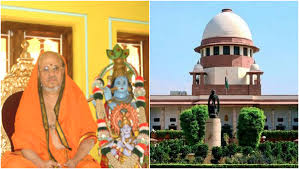National Legal Services Authority vs Union of India and Others
- ByPravleen Kaur --
- 06 May 2025 --
- 0 Comments
1. Introduction
This judgment by the Supreme Court of India addresses the grievances of the transgender (TG) community, who seek legal recognition of their gender identity and claim third gender legal status. The National Legal Services Authority and other organizations filed petitions to provide free legal services and support to marginalized sections of society, including the Hijra community (a term used for transgender individuals in South Asia). [Paragraphs 1-4]
2. Arguments Presented
A. Petitioners' Arguments
1. Shri Raju Ramachandran, senior counsel for the National Legal Services Authority, emphasized the challenges faced by the TG community and argued for their legal right to determine their gender identity and access equal rights and privileges as citizens. He highlighted the discrimination and restrictions faced by the community in various aspects of life, and emphasized that the State cannot discriminate against them based on gender, as it violates the Constitution of India. [Paragraph 5]
2. Shri Anand Grover, senior counsel for the Intervener, discussed the historical background of the third gender identity in India and their position in Hindu mythology, Vedic and Puranic literatures, and the role they played in the Islamic world. He also mentioned the repealed Criminal Tribes Act, 1871, the recognition of their gender identity by international forums and U.N. bodies, and the violation of the fundamental rights of the transgender community in India. [Paragraph 6]
3. Shri T. Srinivasa Murthy, counsel for I.A. No. 2 of 2013, argued that transgender persons should be declared socially and educationally backward and be given the same benefits as male and female genders. He also stated that the right to choose one's gender identity is integral to the right to lead a dignified life, guaranteed by Article 21 of the Constitution of India. [Paragraph 7]
4. Shri Sanjeev Bhatnagar, counsel for the petitioner in Writ Petition No.604 of 2013, highlighted the need for constitutional and legal protection for the Kinnar community and their socio-economic benefits. [Paragraph 8]
B. Respondent's Arguments
Shri Rakesh K. Khanna, Additional Solicitor General, representing the Union of India, acknowledged the sensitive human issue raised by the transgender community. He mentioned the formation of an Expert Committee to study their problems and ensure their representation. [Paragraph 9]
3. Experiences of Transgender Individuals
The judgment highlights the trauma and discrimination experienced by transgender individuals from various sections of society, including their own families. Laxmi Narayan Tripathy, a Hijra, detailed the trauma experienced from birth, while Siddarth Narrain, a eunuch, recalled being beaten by family members for joining the hijra community. Sachin, a TG person, expressed the challenges of not being accepted for their identity. [Paragraph 10]
4. Definition and Historical Background
1. The term "transgender" is an umbrella term that encompasses individuals whose gender identity does not match their biological sex, including Hijras/Eunuchs, who identify as a "third gender," individuals undergoing or who have undergone Sex Re-Assignment Surgery (SRS), and those who cross-dress. [Paragraph 11]
2. The TG community has a strong historical presence in Hindu mythology and other religious texts, and the concept of "tritiya prakrti" or "napunsaka" (third gender) is integral to Vedic and Puranic literatures. [Paragraphs 12-15]
3. Historically, Hijras/transgender persons had a prominent role, but with colonial rule from the 18th century, things changed. The Criminal Tribes Act, 1871, deemed the entire Hijra community as 'criminal' and provided for their registration, surveillance, and control. The act was repealed in August 1949. [Paragraph 16]
4. Section 377 of the Indian Penal Code (IPC) criminalized non-vaginal sexual acts, including anal and oral sex, and was used to prosecute transgender persons, demonstrating the harassment and abuse faced by the community. [Paragraphs 17-18]
5. International Perspectives and Laws
1. The judgment extensively references international judicial decisions and laws to show that recognition of "sex identity gender" and the guarantee of equality and nondiscrimination based on gender identity is growing in international law. [Paragraph 43]
2. Various international bodies, including the United Nations, have endorsed the Yogyakarta Principles as an important tool for identifying State obligations to respect the human rights of all persons, regardless of their gender identity. [Paragraph 23]
3. The judgment cites cases and laws from various countries, including the United Kingdom, Australia, New Zealand, Malaysia, Germany, Argentina, and the United States, that have recognized the rights of transgender individuals and provided legal recognition of their gender identity. [Paragraphs 25-42]
6. Constitutional Rights and Protections
1. The judgment emphasizes that the Indian Constitution guarantees equality before the law for all individuals, including transgender persons, and prohibits discrimination based on gender identity. [Paragraph 54]
2. Articles 15 and 16 of the Constitution prohibit discrimination based on sex and gender, and the expression 'sex' in these articles is not limited to biological sex but also includes those who do not identify as male or female. [Paragraphs 56-60]
3. Article 19(1) of the Constitution guarantees certain fundamental rights to citizens of India, including freedom of speech and expression, and the expression of self-identified gender. [Paragraph 62]
4. Article 21 of the Constitution protects the rights to life and personal liberty, including dignity and privacy. Gender identity recognition is a fundamental right to dignity and freedom under the Constitution. [Paragraphs 67-69]
5. The judgment emphasizes that the expressions in Articles 14, 15, 16, 19, and 21 are "gender neutral" and refer to human beings, including Hijras/Transgenders, based on selfidentification and not surgical or medical procedures. [Paragraph 76]
7. Recommendations and Directions
1. The judgment concludes that discrimination based on sexual orientation or gender identity nullifies equality under the law and provides directions to safeguard the rights of the TG community. [Paragraph 77]
2. The judgment recommends that the government create public awareness to make transgender individuals feel included in society and regain their respect. [Paragraph 99]
3. The recommendations of the Expert Committee formed to study the problems faced by the transgender community should be implemented within six months. [Paragraph 99]
4. The judgment also suggests various measures to address the issues faced by the TG community, including:
1. Addressing gaps in HIV surveillance, prevention, and care interventions for Hijras/TG individuals. [Paragraph 45.1]
2. Addressing structural determinants of risks and mitigating their impact by including mental health counseling, crisis intervention, addressing substance abuse, and connecting to livelihood programs in HIV interventions. [Paragraph 45.2]
3. Training health care providers to be competent and sensitive in providing health care services to Hijras/TG, including STI and HIV-related services, and developing guidelines for gender transition and SRS implementation. [Paragraph 45.3]
4. Providing free gender transition and SRS services in public hospitals in several parts of India to clarify the ambiguous legal status of sex reassignment surgery. [Paragraph 45.4]
5. Implementing stigma and discrimination reduction measures through mass media awareness and focused training for police and health care providers. [Paragraph 45.5]
6. Taking action steps to address legal recognition of gender identity for Hijras/TG, in consultation with stakeholders, including ensuring clarity in procedures for issuing identity documents and addressing civil rights issues. [Paragraph 45.6]
7. Opening up existing Social Welfare Schemes for needy Hijras/TG and creating specific welfare schemes to address their basic needs, including housing and employment. [Paragraph 45.7]
8. Involving vulnerable communities, including Hijras/TG women, in policy and program development. [Paragraph 45.8]
In conclusion, the judgment recognizes the rights of the transgender community, emphasizes the need for legal recognition of their gender identity, and provides recommendations to address the various issues and challenges faced by this marginalized community






























0 comments